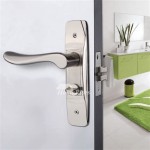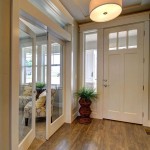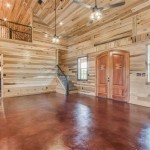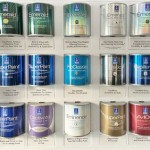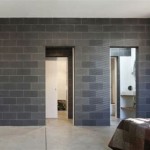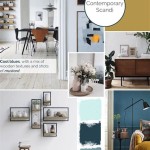How To Lighten Up A Log Cabin Interior Design Style
Log cabins evoke images of rustic charm, cozy fireplaces, and warm, inviting spaces. The traditional log cabin aesthetic often relies on dark wood tones and earthy colors, creating a sense of retreat and connection with nature. However, this inherent darkness can sometimes feel heavy or claustrophobic, especially in smaller cabins or those with limited natural light. Lightening up a log cabin interior requires careful consideration of how to balance the natural elements with brighter, more reflective design strategies.
Achieving a lighter, brighter log cabin interior necessitates a strategic approach that doesn't compromise the cabin's original character and inherent warmth. It's about enhancing the existing features rather than completely reinventing the space. This can be accomplished through a combination of carefully selected color palettes, strategic lighting solutions, furniture choices, and the incorporation of reflective surfaces. The goal is to create a space that feels both airy and inviting while still retaining the unique charm of a log cabin.
Embracing Light Color Palettes
One of the most effective ways to lighten up a log cabin is by introducing lighter color palettes. This doesn't necessarily mean painting the logs themselves, which can detract from the authentic cabin aesthetic and potentially damage the wood. Instead, focus on incorporating lighter colors on walls (if applicable), ceilings, flooring, and furniture. Opting for soft whites, creams, light grays, and pale blues can significantly brighten the space and create a more open and airy feel.
When selecting paint colors for walls, consider the undertones of the wood. Warmer wood tones pair well with creams and off-whites, while cooler wood tones may complement light grays and blues. It’s crucial to sample paint colors in the cabin itself to see how they appear under the specific lighting conditions. The color on the paint chip can look drastically different when applied to a larger surface and viewed under natural or artificial light.
The ceiling is another area where lighter colors can make a significant impact. If the ceiling is made of wood, consider whitewashing or staining it with a lighter tone. This allows the wood grain to still show through while reflecting more light into the room. If the ceiling is drywall, painting it a bright white will immediately brighten the space.
For flooring, consider lighter-toned wood floors, such as bleached oak or maple. Alternatively, lighter-colored rugs can be used to cover darker floors and add brightness to the room. Choose rugs with natural fibers like jute or sisal for a cohesive look that complements the cabin's rustic charm. For smaller cabins, using a consistent flooring color throughout the space can create a more unified and open feel.
Furniture and textiles also play a crucial role in the overall color palette. Opt for light-colored sofas, chairs, and bedding. Consider using slipcovers to lighten up existing furniture without having to replace it entirely. Introduce pops of color through throw pillows, blankets, and artwork to add visual interest without overwhelming the space with dark hues. Linen and cotton fabrics in light colors are ideal for creating a light and airy feel.
Maximizing Natural and Artificial Light
Effective lighting is paramount in lightening up a log cabin interior. This involves maximizing both natural light and strategically incorporating artificial lighting. Start by assessing the existing natural light sources and identifying ways to enhance them. Trim overgrown trees and shrubs surrounding the cabin to allow more sunlight to penetrate the windows. Clean windows regularly to ensure optimal light transmission.
Consider adding or enlarging windows or skylights to increase the amount of natural light entering the cabin. This can be a significant investment, but it can dramatically transform the space and create a brighter, more inviting atmosphere. When choosing windows, opt for energy-efficient models to minimize heat loss in the winter and heat gain in the summer.
The placement of mirrors can also significantly impact the perceived brightness of a room. Position mirrors strategically to reflect natural light and create the illusion of more space. Large mirrors placed opposite windows are particularly effective in amplifying natural light. Smaller decorative mirrors can also be used to add sparkle and visual interest.
Artificial lighting should be layered to create a balanced and well-lit environment. This includes ambient lighting, task lighting, and accent lighting. Ambient lighting provides overall illumination to the room, while task lighting is focused on specific areas, such as reading nooks or kitchen counters. Accent lighting is used to highlight architectural features or artwork.
Choose light fixtures that complement the cabin's aesthetic while providing adequate illumination. Recessed lighting can be used to provide general ambient light without being visually obtrusive. Pendant lights and chandeliers can add a decorative touch while also providing ample light. Table lamps and floor lamps can be used to create a warm and inviting ambiance.
Opt for light bulbs with a warm color temperature to create a cozy and inviting atmosphere. LED bulbs are a good choice because they are energy-efficient and long-lasting. Dimmers allow you to adjust the light levels to suit different moods and activities. Consider using smart lighting systems that can be controlled remotely and programmed to automatically adjust throughout the day.
Incorporating Reflective Surfaces and Natural Elements
Reflective surfaces play a crucial role in bouncing light around the room and creating a sense of brightness and spaciousness. In addition to mirrors, consider incorporating other reflective materials, such as glass, metal, and polished stone. These elements can be used in furniture, accessories, and architectural details.
Glass-topped tables and cabinets with glass doors can help to reflect light and create a more open feel. Metal accents, such as brass or chrome hardware, can add a touch of sparkle and reflect light. Polished stone countertops in the kitchen or bathroom can also contribute to the overall brightness of the space.
Natural elements can also be used to lighten up a log cabin interior. Incorporating plants can add a touch of freshness and vibrancy to the space. Choose plants that thrive in low-light conditions, such as ferns, snake plants, and peace lilies. Place plants near windows to maximize their exposure to natural light.
Natural fabrics, such as linen, cotton, and wool, can also lighten up the space. These fabrics have a lighter and airier feel than heavier materials, such as velvet or leather. Use light-colored throws and pillows to add texture and visual interest to the room.
Bring in natural textures through baskets, wood accents, and stone elements. These items add visual interest without adding more darkness. For example, a light-colored woven basket for holding blankets or magazines can add both texture and light to a dark corner.
Finally, consider the overall layout of the cabin. Ensure that furniture is not blocking windows or doorways, as this can obstruct natural light. Arrange furniture to maximize the flow of traffic and create a sense of openness. Declutter the space to create a more organized and visually appealing environment. A well-organized space will always feel brighter and more inviting.
27 Log Cabin Interior Design Ideas To Spark Inspiration

Cabin Interior Design Tips To Create A Modern Decorilla

Before After Cozy Log Cabin Living Room Decorilla Interior Design

19 Cabin Decorating Ideas To Turn Your Home Into A Cozy Escape

17 Log Cabin Decorating Ideas With Rustic Interior Design

19 Cabin Decorating Ideas To Turn Your Home Into A Cozy Escape
:max_bytes(150000):strip_icc()/download-f039301a9c784af5be08dfd037452d9e.jpeg?strip=all)
22 Modern Log Cabin Ideas For A Chic Outdoorsy Interior
27 Log Cabin Interior Design Ideas To Spark Inspiration

Modern Log Cabin Renovation Ideas

Cabin Interior Design Tips To Create A Modern Decorilla
Related Posts

